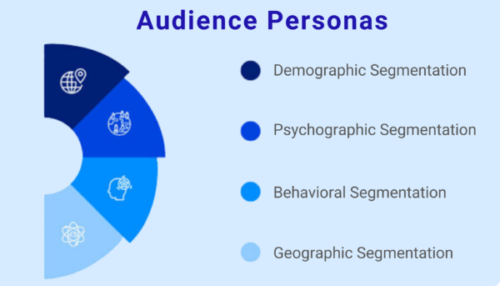Last Updated: August 25, 2025

Effective keyword research is the cornerstone of successful blog writing. It helps you understand your audience’s needs, enhance your content visibility, and drive organic traffic. Whether you’re a seasoned blogger or a newcomer, understanding how to identify and target the right keywords can significantly boost your content’s searchability. This guide takes you through a thorough, step-by-step process of conducting keyword research specifically for blog writing.
Benefits of Keyword Research for Blog Writing

Effective keyword research doesn’t just help with SEO—it brings a range of benefits that enhance the overall quality and performance of your blog. Here’s why keyword research is essential:
- Improved Content Visibility: Targeting the right keywords helps your blog rank higher in search engine results pages (SERPs). This means more people can discover your content, leading to increased traffic.
- Enhanced User Engagement: By understanding search intent, you create content that aligns with what your audience is searching for. This makes your blog more relevant, engaging, and helpful to readers.
- Higher Organic Traffic: Strategically selected keywords attract a steady flow of organic traffic, reducing your dependence on paid advertising. This makes your blog more cost-effective in the long term.
- Better Audience Targeting: Keyword research helps you understand your audience’s preferences, pain points, and interests. This allows you to create tailored content that resonates with your readers, improving retention and loyalty.
- Competitive Advantage: Analyzing competitor keywords gives you insights into what’s working in your niche. This helps you identify gaps and opportunities, enabling you to stand out from the competition.
- Increased Conversion Rates: Long-tail keywords and intent-based keywords often target users closer to making a decision. By addressing these queries effectively, you can drive more conversions, whether it’s subscriptions, downloads, or sales.
- Content Planning Made Easy: Keyword research provides a roadmap for creating relevant and in-demand content. It helps you identify trending topics, seasonal opportunities, and evergreen content ideas.
- Trackable Performance Metrics: With the right keyword strategy, you can track your blog’s performance using analytics tools. Metrics like search rankings, click-through rates (CTR), and organic traffic give you clear indicators of success.
- Supports Long-Term Growth: Keyword research ensures your blog content remains relevant and competitive over time. It enables you to adapt to shifting trends and consistently attract new readers.
By leveraging the benefits of keyword research, you set the foundation for a successful blog that not only ranks well but also delivers value to your audience.
Step-by-Step process for keyword research for blog writing
Step 1: Understand your audience & intent

Before diving into keyword research, it’s vital to have a clear understanding of your target audience and niche. Defining your niche and audience personas allows you to select the most relevant keywords for your content.
Create audience personas:
Start by creating detailed profiles of your ideal blog readers, considering these factors:
- Demographics: Age, gender, income, location, education, etc.
- Psychographics: Pain points, needs, aspirations, challenges.
- Behavioral patterns: Online behavior, browsing preferences, and interests.
- Geographical information: Targeting specific locations like country, region, city, or urban/rural areas.
Understanding search intent:

Search intent refers to why people are searching for something. It helps you align your keywords with the user’s needs. There are four key types of search intent:
- Informational: Users seek to learn something (e.g., “how to improve blog SEO”).
- Navigational: Users are looking for a specific website (e.g., “WordPress login”).
- Transactional: Users are ready to make a purchase (e.g., “buy SEO tools”).
- Commercial: Users are researching options before buying (e.g., “best SEO tools for bloggers”).
Step 2: Brainstorm seed keywords

Seed keywords are the foundation of your keyword research process. These are broad terms related to your blog’s topic and niche.
Start with core concepts:
Think about the primary topics your blog focuses on. For example, if you run a blog on SEO, your seed keywords might include:
- “SEO tips for bloggers”
- “On-page SEO”
- “Keyword research for blogs”
Use specific terms:
If you focus on a particular aspect of SEO (e.g., content writing for SEO), include those as specific seed keywords as well:
- “SEO content writing”
- “Keyword strategy for blog writing”
- “On-page SEO content tips”
Step 3: Use keyword research tools
Once you have your seed keywords, you can expand your list using keyword research tools. Here are some popular tools you can use:
- Google Keyword Planner: Google’s Keyword Planner is a free tool that provides keyword ideas, search volume, and competition data. You can use it to find related keywords and their performance in terms of search volume.

- SEMrush: SEMrush is a premium tool that offers an in-depth analysis of keyword data, including search volume, competition, trends, and keyword variations. It also provides competitor analysis, showing you what keywords your competitors are ranking for.

- Ahrefs: Ahrefs is another powerful SEO tool with a comprehensive keyword research feature. It shows keyword difficulty, search volume, click-through rates, and more.

- Ubersuggest: Ubersuggest, created by Neil Patel, is a free keyword research tool that offers a range of data on search volume, competition, and keyword trends. It also helps you discover content ideas and related long-tail keywords.

- Answer The Public: Answer The Public is an excellent tool for discovering questions, phrases, and long-tail keywords that people are searching for. It gives you a visual representation of search queries related to your keyword.

Step 4: Analyze competitor content

Competitor research allows you to discover what keywords are working for others in your niche. This helps you identify keyword gaps and opportunities.
Identify competitors:
Look at blogs or websites in the same niche, especially those that rank well for topics you’re interested in. These competitors can be direct or indirect.
Keyword analysis:
Use tools like Ahrefs, SEMrush, or Ubersuggest to find out which keywords are driving traffic to your competitors’ blogs. Check for:
- High-performing keywords that drive substantial traffic.
- Gaps in their keyword strategies where you can target underserved topics.
Step 5: Evaluate keywords based on search volume, intent & competition

Once you have a list of potential keywords, it’s essential to evaluate them on several important factors:
- Search volume: This metric shows how many searches a keyword gets per month. High-volume keywords bring more traffic but are also more competitive.
- Search intent: Make sure the keyword matches the user’s intent. For blog content, informational and commercial investigation keywords are ideal.
- Competition: Analyze how competitive a keyword is. Tools like SEMrush and Ahrefs can help you assess how many authoritative sites are targeting the same keyword.
Step 6: Focus on long-tail keywords

Long-tail keywords are highly specific and typically consist of three or more words. While they tend to have lower search volume, they usually lead to higher conversion rates because they capture more focused user intent.
For example, instead of targeting the broad keyword “SEO”, a long-tail version might be:
- “Best on-page SEO practices for blogs”
- “How to do keyword research for blog writing in 2024”
Why target long-tail keywords?
- Lower competition: Long-tail keywords are less competitive, making it easier to rank.
- Higher conversion rates: They attract more qualified visitors who are closer to making a decision or finding the information they need.
Step 7: Filter out irrelevant keywords

Once you have a list of potential keywords, filter out those that aren’t relevant to your blog’s goals.
Consider the following:
- Relevance: Ensure the keywords align with the topics your blog covers.
- Volume: While high-volume keywords are appealing, they may be too competitive for new blogs.
- Intent: Make sure the keywords are aligned with your content’s purpose—whether it’s to educate, entertain, or drive sales.
Step 8: Optimize your blog content with target keywords

Once you’ve completed your keyword research, it’s time to optimize your blog post. Here are some tips for incorporating your keywords:
- Title: Use your main keyword in the title to ensure it’s relevant to search queries.
- Headings & Subheadings: Incorporate variations of your keywords into H1, H2, and H3 tags.
- Content body: Naturally sprinkle your keywords throughout the content. Avoid keyword stuffing.
- Meta description: Include your target keywords in the meta description for better visibility in search engine results.
Step 9: Monitor & Update your keyword strategy

Keyword research is not a one-time task; it’s an ongoing process. Regularly monitor your rankings, traffic, and conversion rates to see how well your chosen keywords are performing.
- Track rankings: Use tools like SEMrush, Ahrefs, or Google Search Console to track keyword rankings.
- Analyze traffic: Check if the keywords you targeted are driving the right kind of traffic to your blog.
- Adjust based on performance: If certain keywords are underperforming, adjust your strategy by revisiting the keyword list and refining your blog content.
Final thoughts
Keyword research is the foundation of successful blog writing. By identifying the right keywords, understanding your audience’s search intent, and optimizing your content accordingly, you can significantly enhance your blog’s visibility and drive organic traffic.
Remember, keyword research is an ongoing process. As trends change and your blog evolves, keep refining your keyword strategy to stay ahead of the competition and continue providing valuable content to your readers.
Ready to take your keyword research to the next level? Don’t miss our “Complete Keyword Research Guide for 2025” for expert tips and strategies.
Author Bio

Sejal Chopra
Sejal Chopra is a dedicated digital marketing executive at Digital Aura, specializing in SEO, content writing & performance marketing that drive measurable results. With a strong focus on data-driven campaigns, Sejal helps businesses optimize their online presence and achieve their marketing goals. She is skilled in leveraging various digital channels to enhance brand visibility and maximize ROI.
Sejal is passionate about staying on top of the latest trends in digital marketing and continually refining her approach to deliver impactful outcomes. Outside of work, she enjoys exploring new ideas and technologies to stay ahead in the dynamic marketing landscape.



